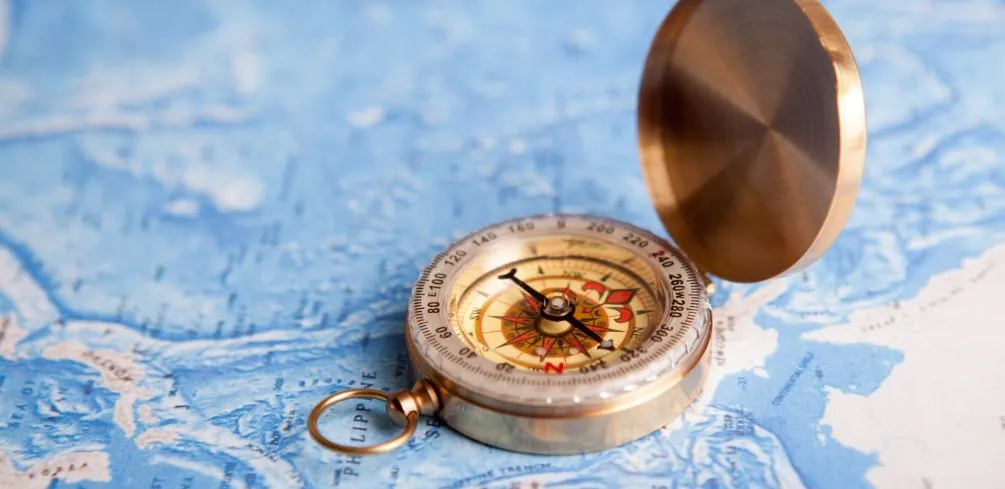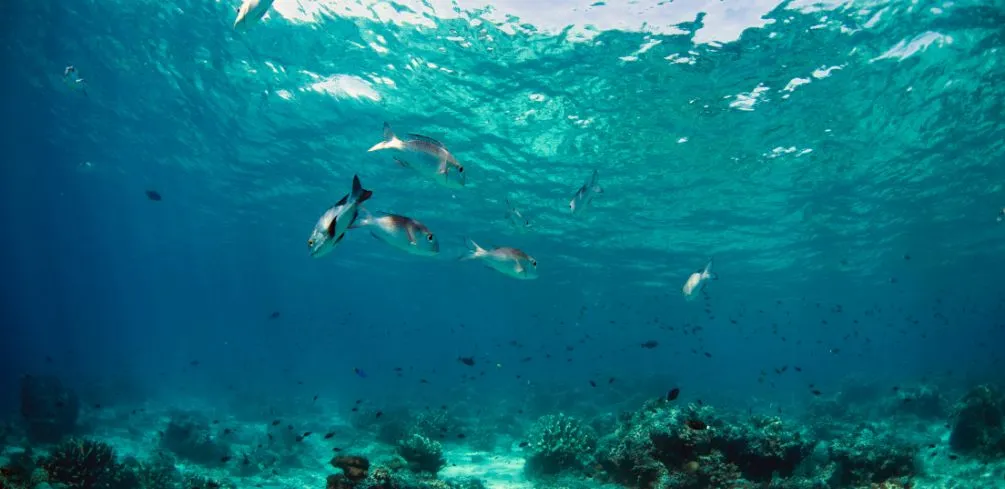Have you ever stopped to think about how temperatures in our oceans have changed over time? It’s easy to take for granted the fact that our world is constantly changing, but it can be quite eye-opening when we take a closer look at the data.
When it comes to ocean temperatures, there is no denying that they have increased since the dawn of the industrial age. In fact, over the last century, the global ocean temperature has risen by an average of 0.13 degrees Celsius per decade. This trend has continued into this century and shows no signs of slowing down.
So what does this mean for us? What does it tell us about our planet as a whole? In this article, I’m going to explore how ocean temperatures have changed over time and what it means for our future.
We’ll discuss why these changes are occurring and what actions we can take to help protect our environment from further damage. With a better understanding of how ocean temperatures have changed over time, we can work together toward creating a healthier future for generations to come.
Historical Context
I’ve always had a fascination with the ocean. When I think about how vast and powerful it is, I’m in awe of its complexity. As a result, I’m interested in learning more about how ocean temperatures have changed over time.
Looking into the history of our planet’s oceans can provide us with valuable insight into climate records. Through various oceanography research methods, we can gain an understanding of sea surface temperature trends over hundreds of years.
Although there are many factors that contribute to these fluctuations, such as El Niño and La Niña events, studying these temperature changes can help us identify potential climate change indicators.
By examining historical data and evidence from around the world, we can learn more about the changing nature of our planet’s oceans and what this means for the future. With this knowledge, we’ll be better equipped to predict and address any potential changes to our environment or ecosystems due to increasing ocean temperatures.
Causes Of Temperature Variation
It’s almost uncanny how the ocean temperature has changed over time. I’m sure you’re wondering what causes this variation.
It’s actually a combination of factors, including climate change, ocean currents, solar activity, air temperature, and sea ice. Let’s take a closer look at each one:
- Climate change: The burning of fossil fuels has caused an increase in greenhouse gases like carbon dioxide and methane in the atmosphere. This traps more heat from the sun, warming the air and causing temperatures to rise in the ocean too.
- Ocean currents: These natural movements of water can move warm or cold water around different parts of the globe. This affects local temperatures as well as contributes to global changes over time.
- Solar activity: Changes in solar radiation can also affect ocean temperatures in both short-term and long-term cycles due to their influence on climate patterns.
- Air temperature: Warmer air means that more heat is transferred into the ocean from above, raising temperatures even further. Conversely, cooler air will cause surface waters to cool down faster than normal.
- Sea ice: Ice reflects sunlight away from the surface of the ocean which helps keep it cool. As sea ice melts or becomes thinner due to warmer weather, less sunlight is reflected away so more heat is absorbed by the ocean instead.
So there we have it – a range of different factors that can influence changes in ocean temperatures over time. While we may not be able to control all these elements, understanding them better can help us make better decisions about how we use our oceans and protect them in future years.
Global Warming Effects
Having explored the causes of temperature variation, it’s important to look at how these changes are impacting the oceans. As global average temperatures have increased, oceanic warming has caused a number of troubling effects.
Sea levels have been rising at an alarming rate due to melting glaciers and the thermal expansion of seawater. This has led to coastal erosion, flooding, and other extreme weather events.
Coral bleaching is another worrying consequence of oceanic warming. When coral becomes exposed to higher-than-normal temperatures, it causes the coral to lose its color and eventually die off. This has had devastating impacts on many marine ecosystems, as coral provides vital habitat for countless species of fish and other marine life.
The final problem is ocean acidification. As carbon dioxide accumulates in the atmosphere, some of it dissolves into the ocean’s surface waters, causing them to become more acidic than normal. In addition to weakening the shells of certain species, this process can also alter entire ecosystems by disrupting food webs and affecting reproductive success rates.
It’s clear that rising ocean temperatures are having a serious effect on our planet’s oceans, from sea level rise and coral bleaching to ecosystem alteration due to acidification. It is essential that we take steps now in order to protect our planet’s precious marine resources before it is too late.
Scientific Observations
I’ve been studying oceanic data and tracking sea surface temperatures for years now. It’s become increasingly clear that our oceans are warming at an alarming rate. The temperature trends I’m seeing a show that the rate of ocean warming has accelerated over the past few decades, which is cause for concern.
The data I’ve collected suggests that the average global sea surface temperature has risen by more than 1 degree Celsius since pre-industrial times in the 19th century. This is largely due to anthropogenic activities like burning fossil fuels, resulting in a rapid increase in atmospheric CO2 concentrations. As these levels have risen, so have ocean temperatures.
In short, it’s quite clear that climate change is having a tremendous impact on our planet’s oceans. We must take action now to reduce emissions and mitigate the effects of climate change before it’s too late.
Otherwise, we’re likely to see ever-increasing rates of ocean warming with potentially catastrophic consequences for marine ecosystems and coastal communities around the world.
Impacts On Marine Ecosystems
After looking at the scientific observations of how ocean temperatures have changed over time, we can now look into the impacts these changes have had on marine ecosystems. It is important to note that the effects of rising ocean temperatures are complex and varied, making it difficult to accurately predict their long-term consequences.
| Impact | Description |
|---|---|
| Marine Life | Rising temperatures have caused a decrease in global fish stocks due to increased mortality, altered migration patterns, and reduced nutritional value of prey. |
| Ocean Acidification | When waters become too warm for an extended period of time, coral bleaching can occur, leading to death or loss of color for large portions of the reef. |
| Coral Bleaching | When waters become too warm for an extended period of time coral bleaching can occur, leading to death or loss of color for large portions of the reef. |
| Ocean Circulation | Warm water can cause changes in circulation currents which affect nutrient transportation and weather patterns around the globe. |
| Sea Surface Temperatures | Rising sea surface temperatures can also lead to more frequent and intense storms as well as coastal erosion due to increased wave heights. |
Overall it is clear that rising ocean temperatures are having a significant impact on marine ecosystems around the world. Changes in fish populations, acidification levels, coral bleaching events, and altered ocean circulation patterns all contribute to a changing environment that could have long-term consequences for both humans and animals alike.
As we continue to observe how ocean temperatures change over time, it is vital that we take action now to mitigate these adverse effects before it is too late.
Frequently Asked Questions
What Are The Long-Term Consequences Of Changing Ocean Temperatures?
As the world continues to experience global warming, we are beginning to see the long-term consequences of changing ocean temperatures. These effects are far-reaching and can create a ripple effect across ecosystems worldwide. From ocean acidification to sea level rise, these changes pose serious risks to our planet’s future health.
Ocean acidification is a phenomenon that can occur when too much carbon dioxide is absorbed by the oceans. This absorption increases the acidity levels of the oceans and can have a detrimental effect on marine life and ecosystems.
In addition, as ocean temperatures increase, it causes sea levels rise, which can put coastal cities at risk of flooding and erosion. Not only would this cause destruction in certain areas, but it would also impact habitats which could lead to species extinctions or population decreases.
It’s important for us to be aware of these long-term consequences so that we can take action now before it’s too late. The time is now to reduce our carbon footprint and invest in solutions that will help us mitigate the effects of climate change on our environment and its inhabitants.
With proper education and policy change, we have the ability to protect our planet from further damage caused by changing ocean temperatures.
Is There Anything Humans Can Do To Reduce The Impacts Of Ocean Temperature Changes?
We’ve all heard of global warming and how it has caused ocean temperatures to rise. But what can we do about it? Is there anything humans can do to reduce the impacts of ocean temperature changes? This is a question that needs to be asked, especially as these changes are having a devastating effect on our planet’s ecosystems.
The effects of rising ocean temperatures include the destruction of coastal ecosystems, the endangerment of marine species, and an increase in extreme weather events. To mitigate these effects, we need to find solutions that will help reduce the impact of climate change on our oceans.
One way to do this is through conservation efforts such as marine protected areas, where certain species are protected from fishing and other activities that could cause harm. Additionally, reducing emissions from burning fossil fuels, which contribute to global warming, would help slow down the rate at which ocean temperatures are increasing.
There are also technological solutions that can be used to reduce the impacts of climate change on our oceans. For example, technologies such as wave energy generation and sea-level rise adaptation strategies could help protect coastal communities from rising sea levels and other adverse effects of global warming.
If implemented correctly, these solutions could have a significant positive impact on our planet’s oceans and their inhabitants.
Humans have an important role to play in addressing climate change and its effects on our oceans – but it will require collaboration between governments, businesses, scientists, and other stakeholders in order to make real progress in mitigating its impacts.
We must also ensure that any actions taken are effective in addressing the root causes of climate change and protecting vulnerable ecosystems from further damage. With concerted effort and commitment from all parties involved, we can make sure that everyone has access to clean water for generations to come.
What Are The Effects Of Ocean Temperature Changes On Coastal Communities?
We all know that climate change is a serious issue, but what are the effects of ocean temperature changes on coastal communities? As temperatures continue to rise, marine species and other wildlife are in danger of becoming extinct and entire ecosystems are at risk.
But what about the people who live in areas close to the ocean? How will these drastic changes affect them?
The effects of rising ocean temperatures on coastal communities can be felt far and wide. Warmer waters have caused sea levels to rise, leading to coastal flooding and erosion.
This can put residents in harm’s way and cause major damage to homes and businesses that are located near the shoreline. In addition, warmer temperatures can lead to an increase in the number of hurricanes and tropical storms, which can also cause destruction along coastlines.
Another effect of rising ocean temperatures is that it can disrupt marine species’ habitats by changing their migration patterns or disrupting their reproductive cycles. This puts many animals at risk of extinction, which could have devastating implications for marine ecosystems as well as humans who rely on seafood as a source of food or livelihoods related to fishing industries.
Furthermore, higher temperatures may also contribute to algal blooms that make fish unsafe for consumption or contaminate drinking water supplies with toxins.
It’s clear that ocean temperature changes pose significant risks for coastal communities all over the world—from flooding and property damage to disruption in food sources and potential health hazards from contaminated water. We must take action now if we want to protect ourselves from these dangers before it’s too late.
What Is The Relationship Between Ocean Temperatures And Climate Change?
The current H2 is an important one to discuss: what is the relationship between ocean temperatures and climate change? Ocean temperature changes are a major factor in the global climate, with rising temperatures having a big impact on coastal communities, marine species, and beyond. To better understand this relationship between ocean temperatures and climate change, here are three key points to consider:
First, it’s important to recognize that rising ocean temperatures are a direct result of the increase in greenhouse gases in our atmosphere. Greenhouse gases trap heat energy in our atmosphere, leading to higher ocean surface temperatures.
This has serious consequences for coastal communities, as warmer water can lead to more powerful storms and more frequent flooding. It also affects marine species by altering their habitat and disrupting their migration patterns.
Second, it’s important to note that these temperature changes can take place relatively quickly. Recent studies have shown that ocean warming is taking place at an unprecedented rate—with some parts of the world’s oceans seeing up to four times faster warming than other areas. This rapid change has serious implications for both coastal communities and marine species alike.
Finally, rising ocean temperatures have a cascading effect on global climate systems. As the oceans become warmer, they absorb less carbon dioxide from the atmosphere—which can lead to further increases in atmospheric greenhouse gas concentrations. In addition, warmer oceans tend to hold less oxygen—which can be detrimental to many marine species that rely on oxygen-rich waters for survival.
In summary: rising ocean temperatures are caused by increased greenhouse gas levels in our atmosphere; these temperature changes can occur rapidly, and they have far-reaching repercussions on global climate systems, which affect coastal communities and marine species alike.
How Do Ocean Temperature Changes Influence Marine Species And Habitats?
It’s like a domino effect: when ocean temperatures change, so too does the fate of marine species and habitats. From coastal communities to entire ecosystems, the impact of ocean temperature fluctuations can have far-reaching consequences. Let’s take a look at how temperature changes influence marine species and habitats.
The effects of rising ocean temperatures can be devastating for marine species. Warmer temperatures can cause coral bleaching in some areas, while other areas may experience an increase in certain harmful algal blooms that are toxic to fish and other organisms.
As a result, many fish populations are being forced to move towards cooler waters or face extinction. This can lead to a disruption of food webs and an overall decrease in biodiversity in certain parts of the ocean.
Warming ocean temperatures can also affect various ocean habitats. For instance, sea ice is decreasing due to higher temperatures which have led to less habitat for polar bears and other Arctic creatures who rely on it for survival.
On the other hand, warmer water temperatures can lead to more productive fishing grounds for some species as well as increased growth rates for certain plankton populations. This could potentially benefit coastal communities that depend on these resources for sustenance or livelihoods such as fishing or tourism.
No matter what the outcome, it’s clear that temperature changes have a significant effect on marine life and habitats around the world:
Marine Species:
- Coral bleaching
- Fish population displacement
- Disruption of food webs
Ocean Habitats:
- Less sea ice leads to less habitat for polar bears and other Arctic creatures.
- More productive fishing grounds
- Increased plankton growth rates
Coastal Communities:
- Dependence on resources like fish or tourism
Ocean temperature changes have become one of the most pressing issues facing our planet today – one with impacts extending beyond just marine life but also into human lives as well. If we want to ensure healthy oceans for generations to come, we must take action now before it’s too late.
Conclusion
The changing ocean temperatures are having a huge impact on our planet. In the past 50 years, the oceans have absorbed more than 90% of the extra heat caused by human activity. This has led to an overall rise in global ocean temperatures of 0.4°C since 1969, with some regions experiencing even higher increases.
The effects of this temperature change can be seen in many places around the world. Coastal communities are increasingly affected by flooding and storm damage as sea levels rise due to warmer waters melting polar ice caps. Marine species and habitats are also being disrupted as changes in water temperature force them out of their natural habitat.
We need to take action if we want to reduce the impacts of changing ocean temperatures on our planet and its inhabitants. We must focus on reducing greenhouse gas emissions, which are causing much of the warming in the first place.
We should also look into ways to protect marine ecosystems, such as creating protected areas for species that are particularly vulnerable to changes in water temperature. By understanding how ocean temperatures have changed over time, we can better prepare ourselves for future changes and ensure a safe future for our planet’s oceans and all those who depend on them.






